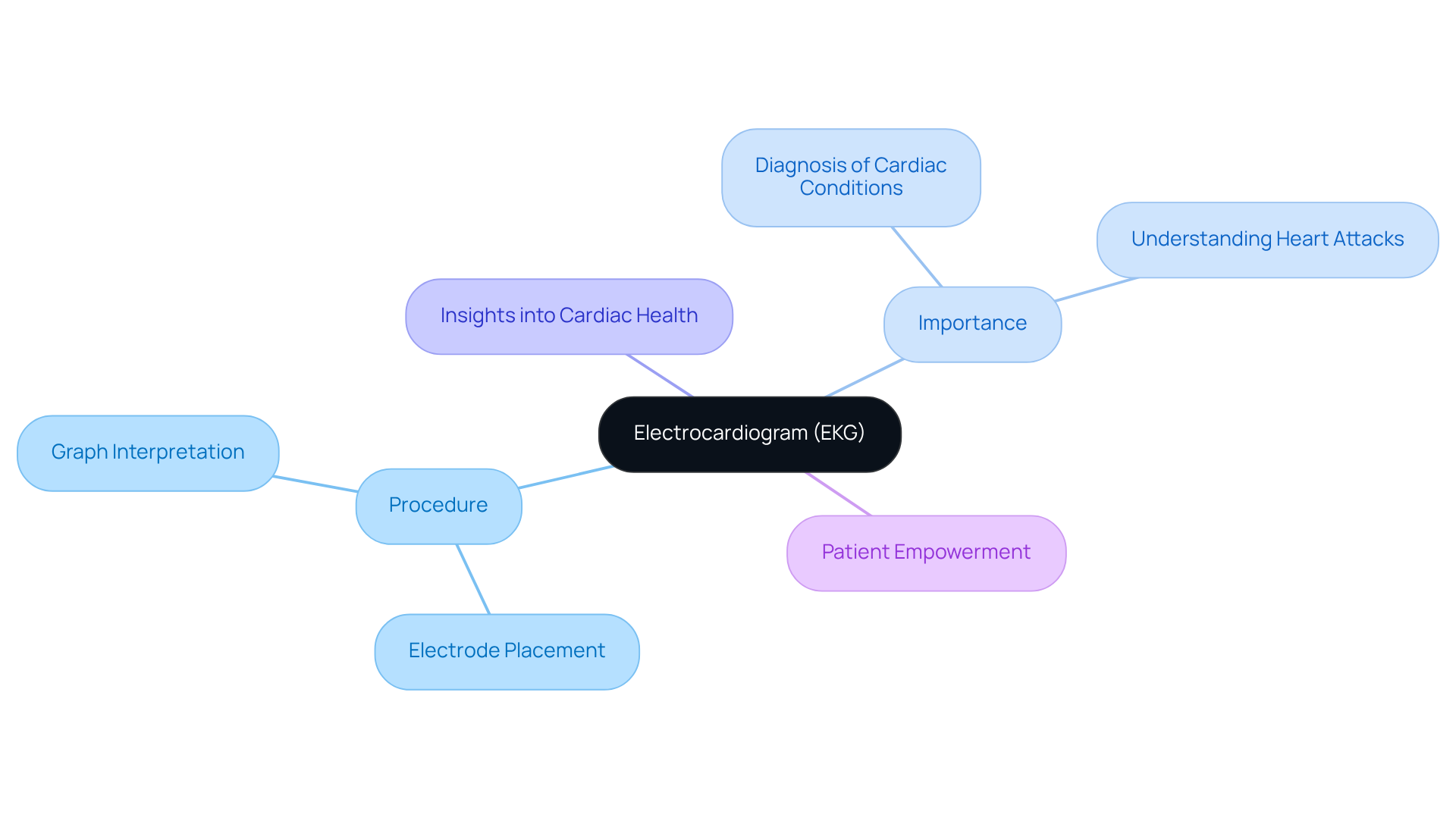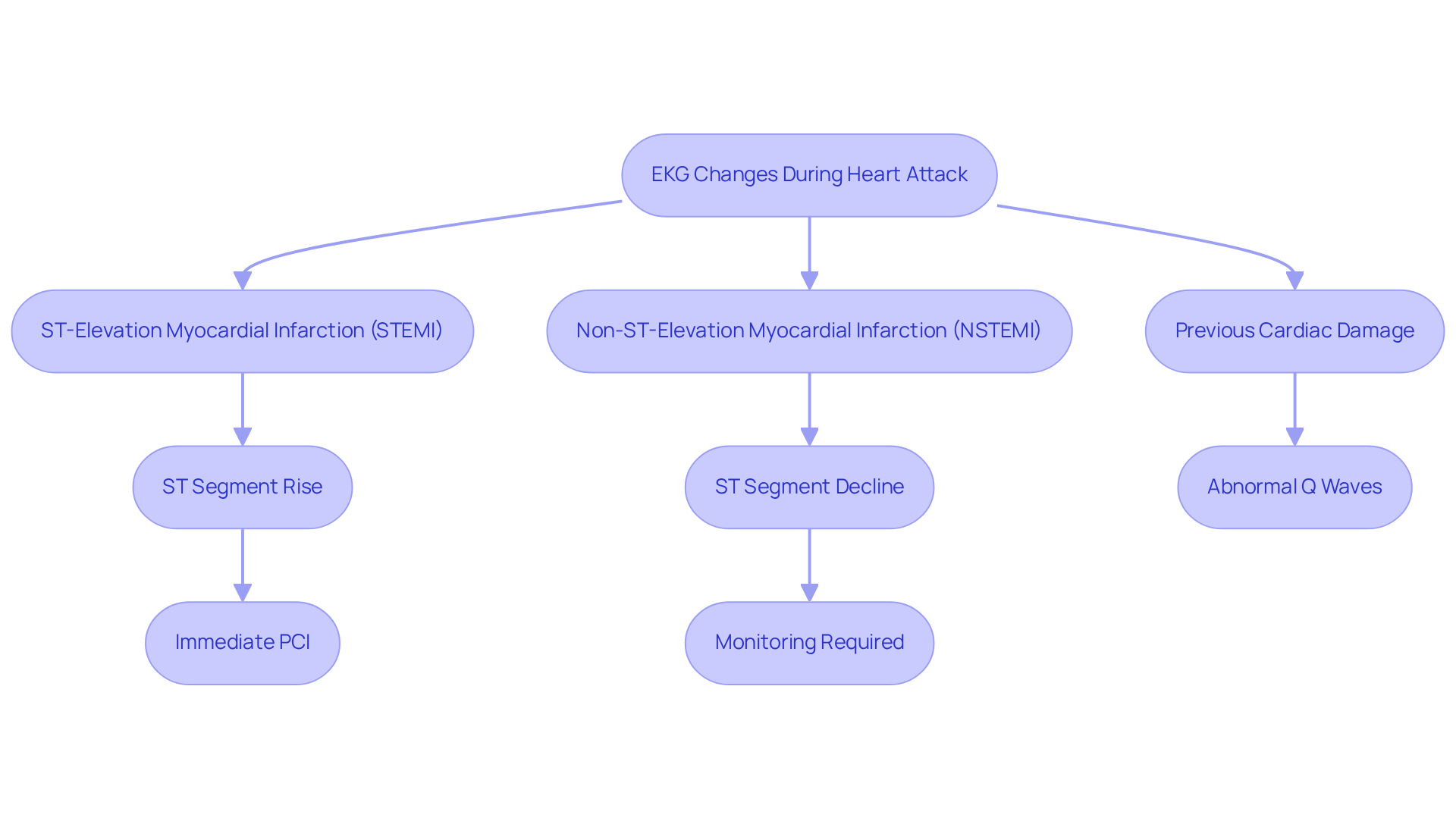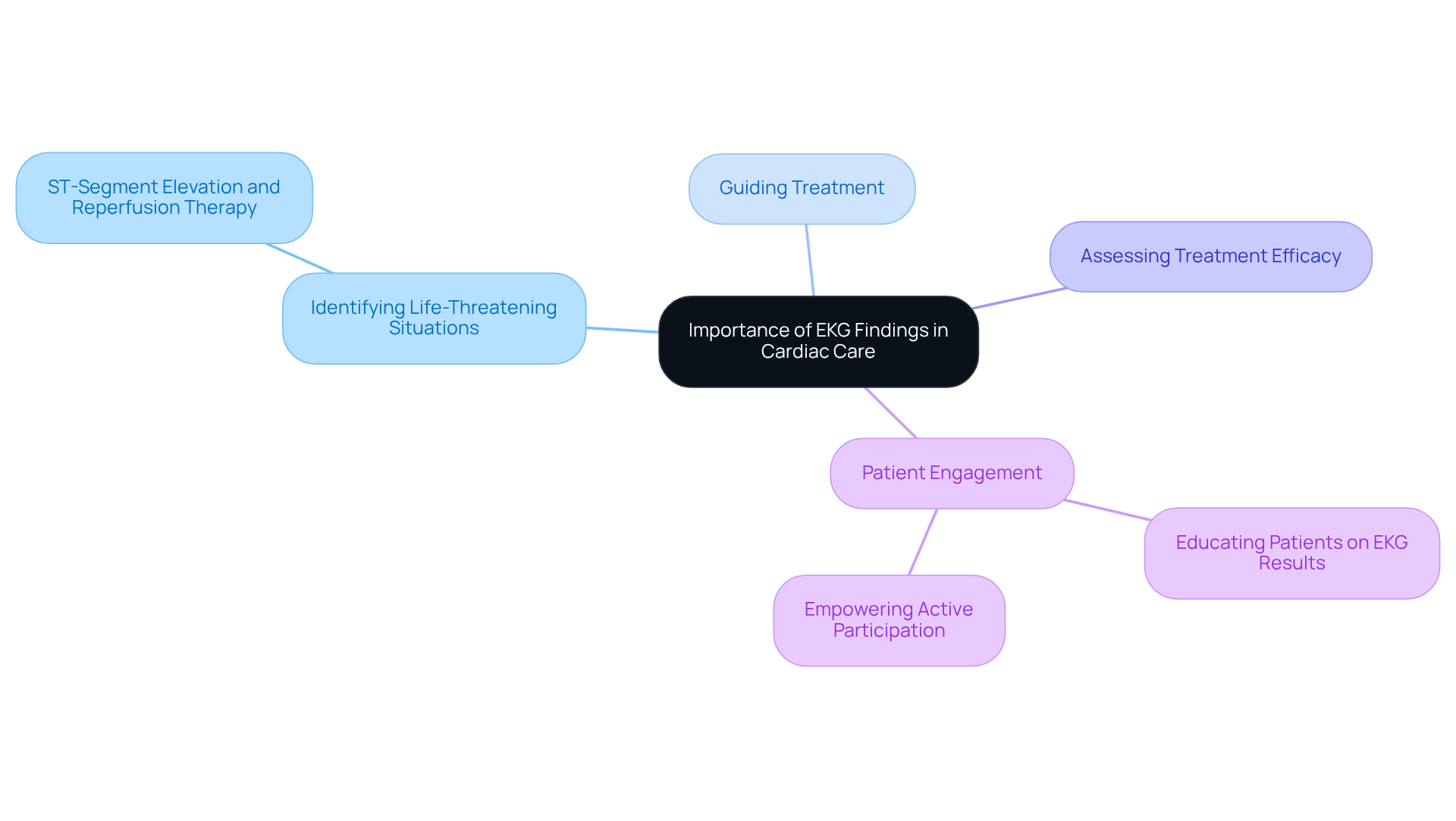


During a heart attack, an EKG can reveal significant changes, such as ST-segment elevation or depression. These alterations indicate critical issues like myocardial ischemia or infarction, which are important for timely diagnosis and treatment decisions. Recognizing these EKG patterns is essential, as it can drastically improve patient outcomes in emergency cardiac care.
Are you or a loved one feeling anxious about heart health? It’s completely understandable to have concerns, especially when it comes to something as vital as your heart. The good news is that healthcare professionals are here to help. By understanding the importance of these EKG changes, we can work together to ensure that you receive the best possible care. Remember, you are not alone in this journey, and support is always available.
Understanding the intricate dance of electrical impulses within the heart can truly be the difference between life and death during a cardiac event. An electrocardiogram (EKG) is a vital tool in this regard, revealing critical changes that occur during a heart attack. As healthcare professionals strive to decode these changes, you might wonder: what exactly does an EKG look like during a heart attack, and how can these readings guide timely interventions?
Exploring the nuances of EKG readings not only sheds light on the heart's distress signals but also emphasizes the urgent need for swift diagnosis and treatment in the face of myocardial infarction. Remember, understanding these signals can empower you to seek help promptly, ensuring you receive the care you deserve.
An electrocardiogram (EKG or ECG) is a valuable medical examination that captures the electrical activity of your heart over time. This non-invasive procedure involves placing electrodes on your skin to detect the electrical impulses generated by your heartbeats. The resulting graph illustrates the rhythm, rate, and electrical conduction of your heart, providing critical insights into your cardiac health.
EKGs are essential tools in diagnosing various cardiac conditions, and understanding what does an EKG look like in a heart attack is crucial for identifying myocardial infarctions and other cardiovascular diseases. Understanding the fundamentals of EKGs is important for both healthcare professionals and patients alike. It helps establish a foundation for interpreting what does an EKG look like in a heart attack and the changes that may occur during a cardiac event.
If you have concerns about your heart health, knowing about EKGs can empower you. They are not just tests; they are a step towards understanding your body better. Remember, you are not alone in this journey. Reach out to your healthcare provider if you have any questions or need support regarding your heart health.

During a cardiac arrest, one may wonder what does an EKG look like in a heart attack, as it shows clear alterations that may indicate myocardial ischemia or infarction. Notably, ST rise is a hallmark of ST-Elevation Myocardial Infarction (STEMI), signaling a critical obstruction in blood circulation. In contrast, segment decline often points to a non-ST rise myocardial infarction (NSTEMI), suggesting less severe but still considerable damage to the heart muscle. Additionally, the presence of abnormal Q waves may indicate previous cardiac damage, reflecting the heart's ongoing struggle with oxygen deprivation.
It is essential for healthcare providers to recognize what does an EKG look like in a heart attack, as these changes directly influence immediate treatment decisions. The phrase 'time is muscle' highlights the urgency of treating STEMIs to minimize myocardial death. For instance, prompt recognition of the segment rise can lead to swift actions like percutaneous coronary intervention (PCI), aimed at restoring blood circulation and reducing heart muscle injury. Current research emphasizes the significance of these EKG markers, particularly in revealing what does an EKG look like in a heart attack, with studies showing that early diagnosis and treatment can significantly enhance patient outcomes.
In clinical practice, understanding what does an EKG look like in a heart attack is vital for identifying upward and downward shifts. The ST segment is located between the QRS complex and the T wave, and its displacement can indicate various cardiac conditions. For males under 40, significant ST rise is defined as greater than 0.25 mV, while for females, it is greater than 0.15 mV. Conversely, ST depression occurs when the segment appears abnormally low, below the baseline, often associated with conditions like myocardial ischemia, hypokalemia, and left bundle branch block.
Real-life examples illustrate the impact of these EKG changes. Patients presenting with chest pain and ST segment elevation often seek to understand what does an EKG look like in a heart attack, as they are typically diagnosed with STEMI, which requires prompt intervention. Conversely, those with ST-segment depression may experience less acute symptoms but still require careful monitoring and management to prevent further complications. It is crucial to maintain a high index of suspicion for these EKG changes, as timely recognition can lead to better management and improved patient outcomes. Furthermore, programs like Amavita's CardioElite™ enhance the ability of healthcare providers to deliver proactive, data-driven care, including advanced diagnostic tools and 24/7 cardiology consultation, ultimately reducing readmissions and improving overall cardiac health in skilled nursing facilities.

EKG findings play a vital role in cardiac care, offering essential insights into your cardiovascular health. Understanding these findings can be crucial for swiftly identifying and managing life-threatening situations, such as cardiac arrests. For example, when ST-segment elevation is detected on an EKG, it can lead to the initiation of reperfusion therapy—a key intervention that significantly reduces cardiac damage and improves survival rates.
In addition to this, EKGs are invaluable in assessing how well treatments are working and in developing long-term management strategies for those with chronic cardiovascular conditions. By taking the time to educate you about your EKG results, healthcare providers empower you to take an active role in your heart health, fostering a deeper understanding and engagement with your care. This proactive approach can ultimately lead to better outcomes and a higher quality of life for individuals facing cardiovascular challenges.
Remember, you are not alone in this journey. Your healthcare team is here to support you every step of the way, ensuring that you feel informed and cared for as you navigate your heart health.

Understanding the appearance of an EKG during a heart attack is crucial for both patients and healthcare providers. The EKG serves as a window into the heart's electrical activity, revealing vital changes that indicate the presence of myocardial infarction. Recognizing these alterations not only aids in diagnosing heart attacks but also plays a pivotal role in guiding immediate treatment decisions, ultimately impacting patient outcomes.
Key insights from the article highlight the importance of specific EKG changes, such as ST elevation and depression, which signify different types of myocardial infarctions. These markers underscore the urgency of timely intervention, as the phrase "time is muscle" emphasizes the critical nature of rapid treatment to minimize heart damage. Furthermore, understanding EKG results empowers patients to engage actively in their heart health, fostering a collaborative approach to care.
In light of these findings, we must prioritize education about EKGs and their implications in cardiac care. A proactive understanding of EKG changes can lead to better recognition of heart health issues and improved management strategies. By staying informed and communicating openly with healthcare providers, individuals can take significant steps toward ensuring their cardiovascular well-being. Together, we can make informed decisions that contribute to a healthier future.
What is an electrocardiogram (EKG or ECG)?
An electrocardiogram (EKG or ECG) is a medical examination that records the electrical activity of the heart over time by placing electrodes on the skin.
How does an EKG work?
An EKG works by detecting the electrical impulses generated by heartbeats, which are then illustrated in a graph showing the heart's rhythm, rate, and electrical conduction.
Why are EKGs important?
EKGs are essential tools for diagnosing various cardiac conditions, including myocardial infarctions and other cardiovascular diseases.
What can an EKG reveal about heart health?
An EKG provides critical insights into cardiac health by showing the heart's rhythm and electrical activity, helping to identify potential issues.
How can understanding EKGs benefit patients?
Understanding EKGs empowers patients by providing knowledge about their heart health and the importance of monitoring cardiac activity.
What should I do if I have concerns about my heart health?
If you have concerns about your heart health, it is important to reach out to your healthcare provider for questions or support regarding EKGs and heart health.